Tripod
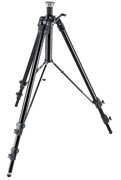
Tripods for the movie industry can be a motorized vehicle with a camera mounted on it or on a wheeled device, either called a “dolly”, but that is a different kettle of tea.
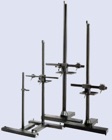
Tripods are made of aluminum, carbon fiber, wood, steel, magnesium, or a combination of aluminum, carbon fiber and steel.
Tripods have different clamping methods for the leg adjustments. I have several that snap, clamp or twist. Some photographers have a preference for one type or another. Its a personal choice

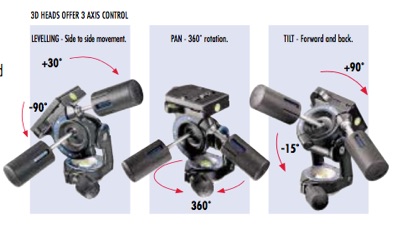
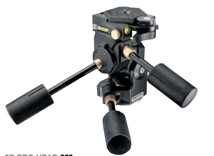
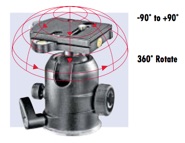
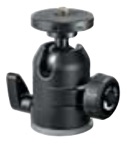

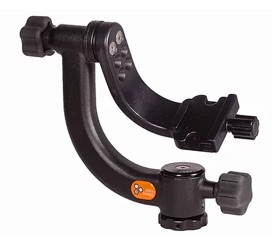
A good indication of how the lens’ manufacturer wants you to attach the lens and camera setup to your tripod’s head is that the lens has a rotating collar with a foot. For heavy lenses its usually the lens that attaches to the tripod’s head due to weight. Also, if you put a heavy lens on your camera, the weight of the lens supported only by the camera body would probably break the lens off the camera. Your camera would be destroyed and the lens may break upon hitting the ground. If the camera is attached to the tripod with a heavy lens, the place where the camera body attaches to the head may also cause irreparable damage. Ergo, a lens with collar and foot, don’t even think of mounting the camera to the head - mount the lens to the tripod head.
Another thing to consider is that a heavy lens with a camera attached to the tripod head via the camera is very, very difficult to manage. Using the lens’ foot helps. Very heavy lens a gimbal is the best option.
I have more heads than tripod legs. Depending upon what I am doing, I choose the appropriate head. The heads unscrew from the tripos legs and then switched with a different head.
Before buying a tripod with or without a head, consider the weight that will be attached and the manufacture’s recommended weight limit. The same applies for tripod heads. If you have a camera and lens weighing, for example, 1 kilogram (2.2 pounds) and that is all you want, you won’t need a tripod or head designed for a 10 kilogram (22 pound) setup. I have one setup that comes close to this weight therefore I buy tripods and heads that can support more than this weight.
For wildlife/bird photography I usually use a ball head on a strong legged tripod. I can do all the movements at once, lock the settings and capture the moment. I also would use a gimbal head. This depends upon which lens I use. With my 400mm f/2.8, and 500mm lens I use a gimbal head. It is much easier to work with the lens than a ball head due to the setup’s massive weight. Depending upon the camera, the setup can weight more than 5 kilogram (11.2 pounds) so gimbal it is.
Note that less known manufacturers may over estimate the ability to lock in position while using something heavy. You can check that quickly by putting on a heavy lens and camera combination, angle the lens up or down, and watch to see if the setup starts moving up or down with the settings locked.
For studio photography and any work with a large format camera I use the heaviest tripod I have with a three way/three dimensional head so I can lock every position individually. View cameras are heavy, A ball head would mean the camera wobbling all over the place until I lock the head. For any adjustment I would have to go through the whole process again and again. With a three way head you can make individual adjustments without upsetting the other adjustments.
If you want to go sight-seeing or hiking, You should consider a tripod that closes up as a small unit, is light but sufficient to give you a steady shot. There are some surprisingly decent and not too expensive. On the other hand you could buy a $1000+ tripod with a $700 head. Tripods are also sold with an attached (and removable) head. Buy what is reasonable for what you do. Ask yourself; do I need a studio tripod that can expand to 3 meters (about 10 feet) in height and very heavy or one that holds my camera, relatively light and will be used once in a while?
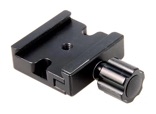
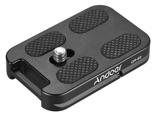
Tip: I also placed an Arca -Swiss clamp on the top of every tripod and a plate on the bottom of every head I have. This allows me to change a head in less than 30 seconds.. No more screwing and unscrewing every time I want to change things up.
Tip: Other than the plate attached to the camera, I use something readily available in a hardware store. Its a small tube containing a liquid that helps keep the plate screw from loosening its connection with the clamp or plate. Commercially it is called Locktite and Lock-it. Its a red or blue liquid.
Tip: If you want extra stability, have a bag that you hook onto the tripod’s legs. Then fill with rocks or whatever you have handy. The added weight helps keep wind or whatever from shaking the tripod. If you purchased a light tripod but want to give it more stability, use this tip. Take into consideration the weight limitation of the tripod legs.
Tip: Lending your tripod to anyone may mean kissing the tripod goodbye. It comes back as a mess or not functioning. It may never come back, as in “I just need it for a little longer”, “I lost it”, or it fell and is now at the “bottom of the Grand Canyon”. They may become indignant when you tell them the replacement cost and you expect them to either replace or pay for it. Keep your friends as friends: just say “No”.
Note; Arca-Swiss is a trade name of a company. The plate and clamp system is what the company came up with and has become a universally produced system.
Opinion: Many people buy big brand name plates and clamps, I have a few, but I have found little difference in functionality between the very expensive and the on-line bargains. With that said, I have found that most cheap tripods are just that - cheap: too flimsy, shaky. unstable, and not reliable for risking your valuable camera. That $10 tripod just doesn’t really, well, you know. Figure something in the $60-$300 range that is compatible with your needs.
Story: Once I brought a very nice, very good Linhof tripod to beaches while exploring Prince Edward Island. Sand got in everywhere. When I got home the legs had to be taken apart and washed, along with all its other parts. It took a while but I finally found the hidden screw to take the ball head apart, removed all the lubricant, repacked it with lithium grease and then reassembled. Not the least bit fun...
Story: Once I was given a reasonably inexpensive tripod with a three way head. After a few years one of the legs, regardless of what I tried to fix it, would so slowly begin to sink down. I just can’t bring myself to dispose of it. I was also given a now antique tripod. The head was unusable, but the legs are of magnificent quality. Just can’t use it because nothing will fit on top of it. Just more junk I can’t let go.
The tripod and tripod head images above are from Manfrotto catalogues. The gimbal tripod head comes from the Jobu Design on-line catalogue. The clamp and plate are from the Amazon.ca site.
copyright Stephen Eisenberg
